

SOUTHEAST
March 2004

3 of 4


SOUTHEAST
March 2004


3 of 4
This is the day that drew us south in the first place: Today we search for Canebrakes.
Get up early and drive to the appointed site where, after months of correspondence, I finally meet Richard. By
now we feel like old friends, and being together in person just confirms that feeling. Sometimes you just luck out.
Richard had recruited a number of buddies to join the search, and as our group grows we decide to split up to cover
more ground. Ron and Danny head off in one direction with Bill, while Richard and I follow Mark into the woods.
The area has been scoured by fire, eliminating the dense, green undergrowth that would normally cover the
ground. The gray surface lies open and exposed, a lawn of ash in a park of charred pines and sooty stumps. Without
the wire grass and broad palmetto leaves, herps have taken to hiding in plain sight. We nearly step on this motionless
Garter till Richard points at our feet and says, “Snake!”
We walk from one site to another, unfortunately seeing less than expected. Mark encourages us with stories of
snakes he has found here before, as recently as a few days earlier. The colder weather has driven them back
underground, but he assures us this is the place for Canebrakes, and he feels certain that one will still be found on the
surface. Of course, Mark keeps saying that after every unsuccessful spot, and I begin to prepare myself for
disappointment, when without fanfare he casually says, “There’s one.” He points to an elevated tin, and in the
shadow along the edge I see my first wild Canebrake!
To Mark and Richard this is commonplace, but to me it’s a triumph. I want to let Ron and Danny know, but they
are far off in another direction, and even if I could contact them, there is no way to explain where we are. Only Mark
is intimately familiar with our location, displaying an astonishing knowledge of these woods and the resident herps,
right down to individual snakes and where they are likely to be.
We seem to be wandering aimlessly, but Mark knows exactly where we are going. “There’s a stump up ahead
where I’ve seen Canebrakes,” he exclaims, and as we approach he says, “Like that one.” Sure enough, there’s a snake
sunning itself on the stump, but it starts slipping away before I can get out my camera. Just manage to squeeze off a
shot as it disappears into the hollow interior.
We meet up with the others who, unfortunately, found even less than our group. Receive congratulatory curses
from Ron and Danny for my seeing a Canebrake while they did not, but I assure them they can look at my pictures.
They are not amused.
Move on to another area and fan out across the open ground between the pines, searching the barren surface for
any sign of herps. Suddenly someone says, “Diamondback!” and we all freeze. Off in the distance, coiled near a
stump, we can make out the circular form and diagonal lines of an EDB.
It all seems so strange. Under ordinary circumstances the snake would be surrounded by camouflage,
completely cryptic and unnoticeable even from a few feet away; now we can spot it from across the forest. Eventually
it notices us, too, and slowly it crawls into a tunnel beneath the roots of the stump.
This is a different kind of snake hunting for me, this walking about in empty spaces, looking for animals out in
the open. I’m used to marching through vegetation, pushing aside cover to find hidden herps, straining to decipher
the shape and pattern of concealed critters as they blend into their surroundings. Instead, this feels like beachcombing
the woodlands during a parched low tide, stumbling upon reptiles scattered like driftwood on the dry forest floor.
Most snakes survive the fires by seeking refuge underground. Unfortunately, not all creatures can escape so
easily. This first Box Turtle seems to have gotten by relatively unscathed, but the second one is terribly injured, its
scutes cracked and peeling from the intense heat. Incredibly, it’s still alive. These resilient reptiles sometimes recover
from the most extreme wounds, and we hope this poor guy still has a chance.
This is a surprise. We are in uplands pine forest, far from any water, and the last the thing I might expect is a
Cottonmouth. Bill explains that sometimes they migrate into the woods to seek underground shelter for the winter,
emerging in the spring to bask and warm up before descending back into the lowland swamps. That’s just what this
one is doing, perched above the entrance to its hibernaculum.
I see Bill coming down a hill and ask if he’s had any luck. “No. Worse than that,” he deadpans, “found a Racer.
Wanna see?” Most herpers aren’t fond of these nervous, nasty snakes, but this one remains surprisingly calm, perhaps
because it’s cool.
That is the last herp of the day. We say our thank-yous and good-byes to Mark and Bill and head off towards
tomorrow’s rendezvous with Richard. On the way, however, we have to make a detour.
Ask any herper of a certain age for the greatest influences on their early interest, and you’re sure to hear
mentioned the name of Carl Kauffeld and his classic book, Snakes and Snake Hunting. These were the stories that fueled
a generation of snake hunters, that made us want to take off for the field and re-create adventures we’d only read
about in books. Kauffeld described destinations where the dreams of a young herper could come true
―
Ramsey
Canyon, the Pine Barrens, Okeechobee
―
but no place more magical than the hunt club of Okeetee in South Carolina.
Now off-limits to herpers, it’s become a legend, a fixture in the imagination and collective memory of those of us who
read and re-read the indelible tales.
And so it was that we find ourselves making a pilgrimage to pause for photos beneath a symbol of childhood
inspiration. Then speed away, grateful we weren’t shot.
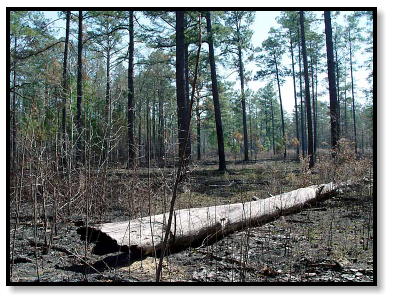
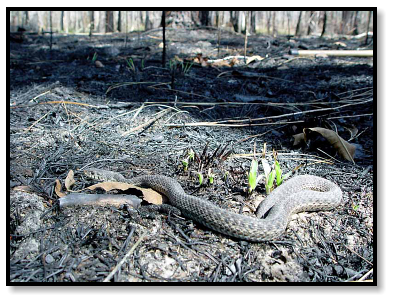
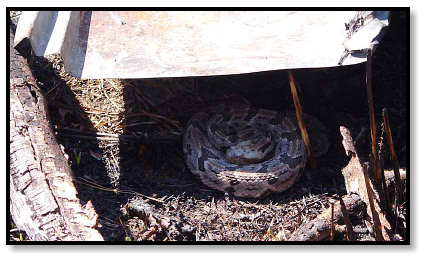
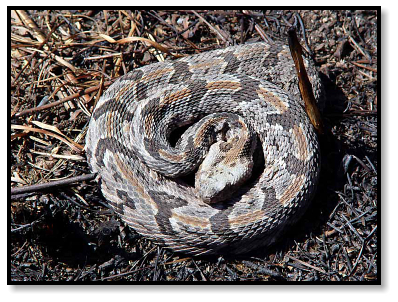
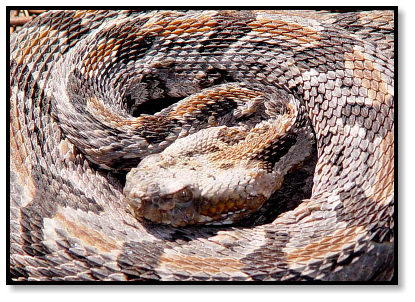
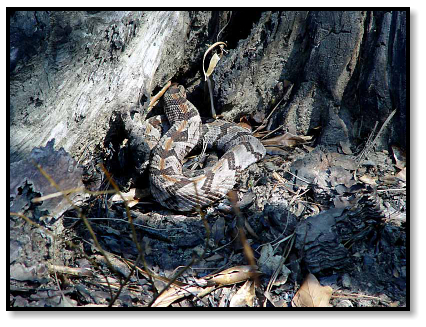
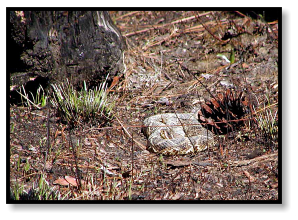
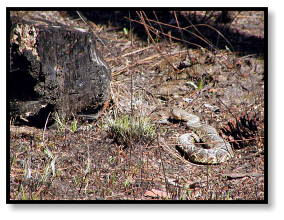
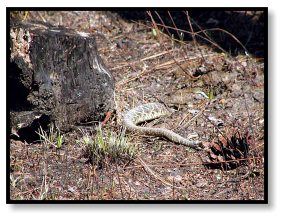
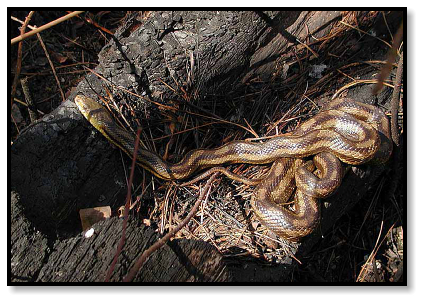
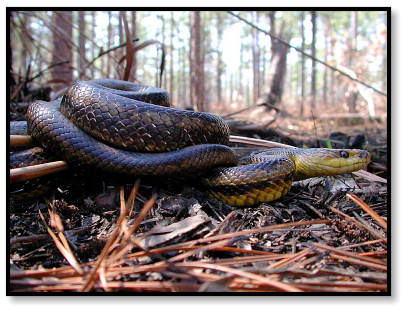
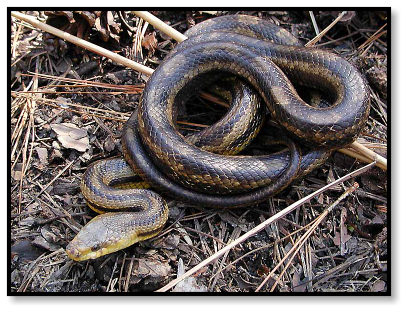
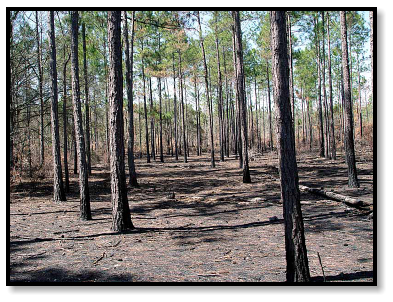
Eastern Garter Snake
Thamnophis sirtalis sirtalis
Canebrake Rattlesnake
Crotalus horridus
Southern coastal plain form of Timber Rattlesnake
Yellow Rat Snake
Elaphe obsoleta quadrivittata
Although the locals call them Yellows, these Rat Snakes are an interesting intergrade. Bearing blotches and a darker complexion more
characteristic of Gray or Black Rat Snakes, they also combine the typical stripes and mustard coloration of Yellows.

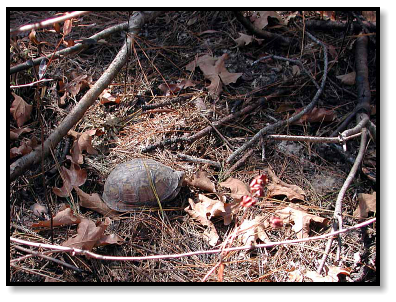
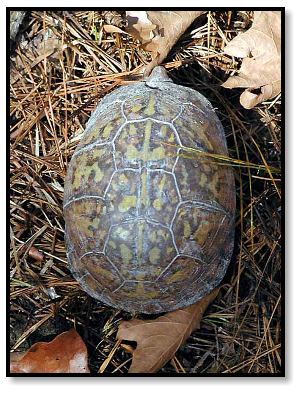
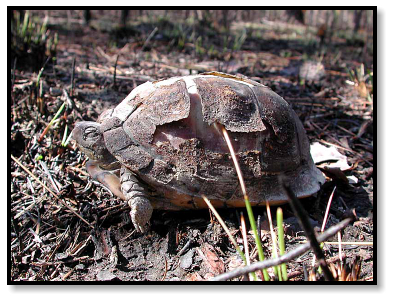
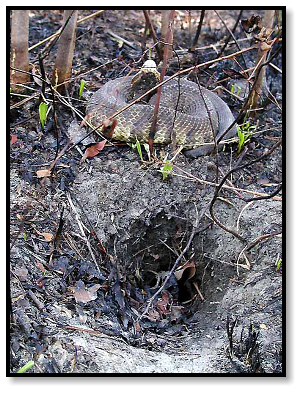
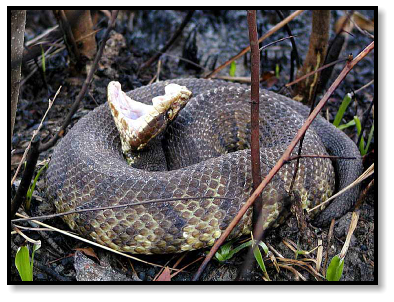
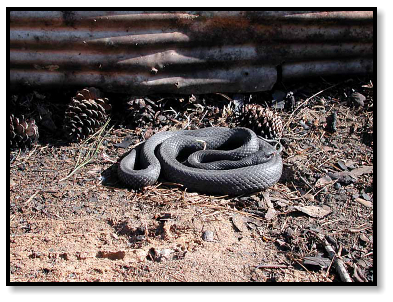
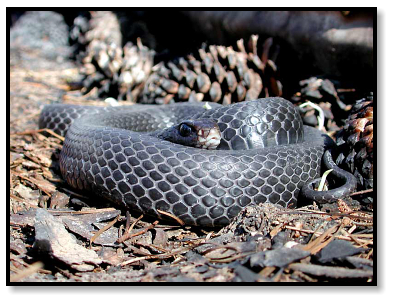
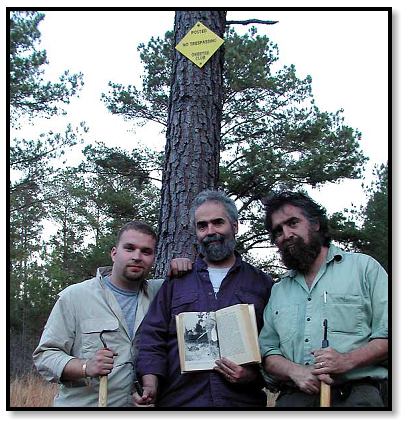
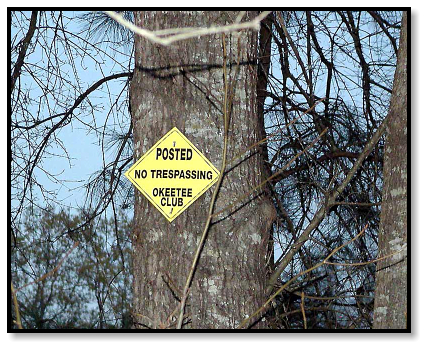
Eastern Box Turtle
Terrapene carolina carolina
Eastern Cottonmouth
Agkistrodon piscivorus piscivorus
Southern Black Racer
Coluber constrictor priapus










